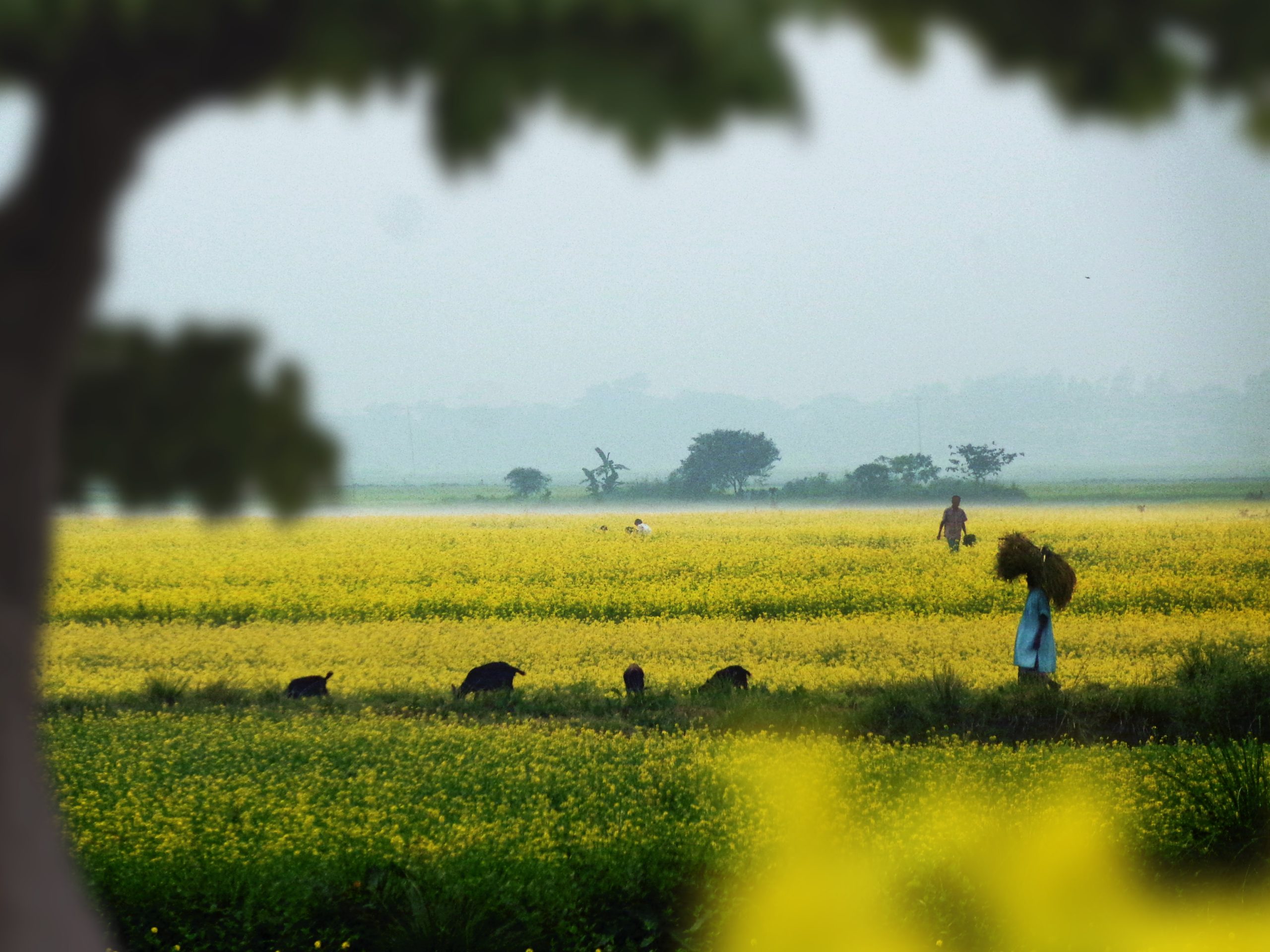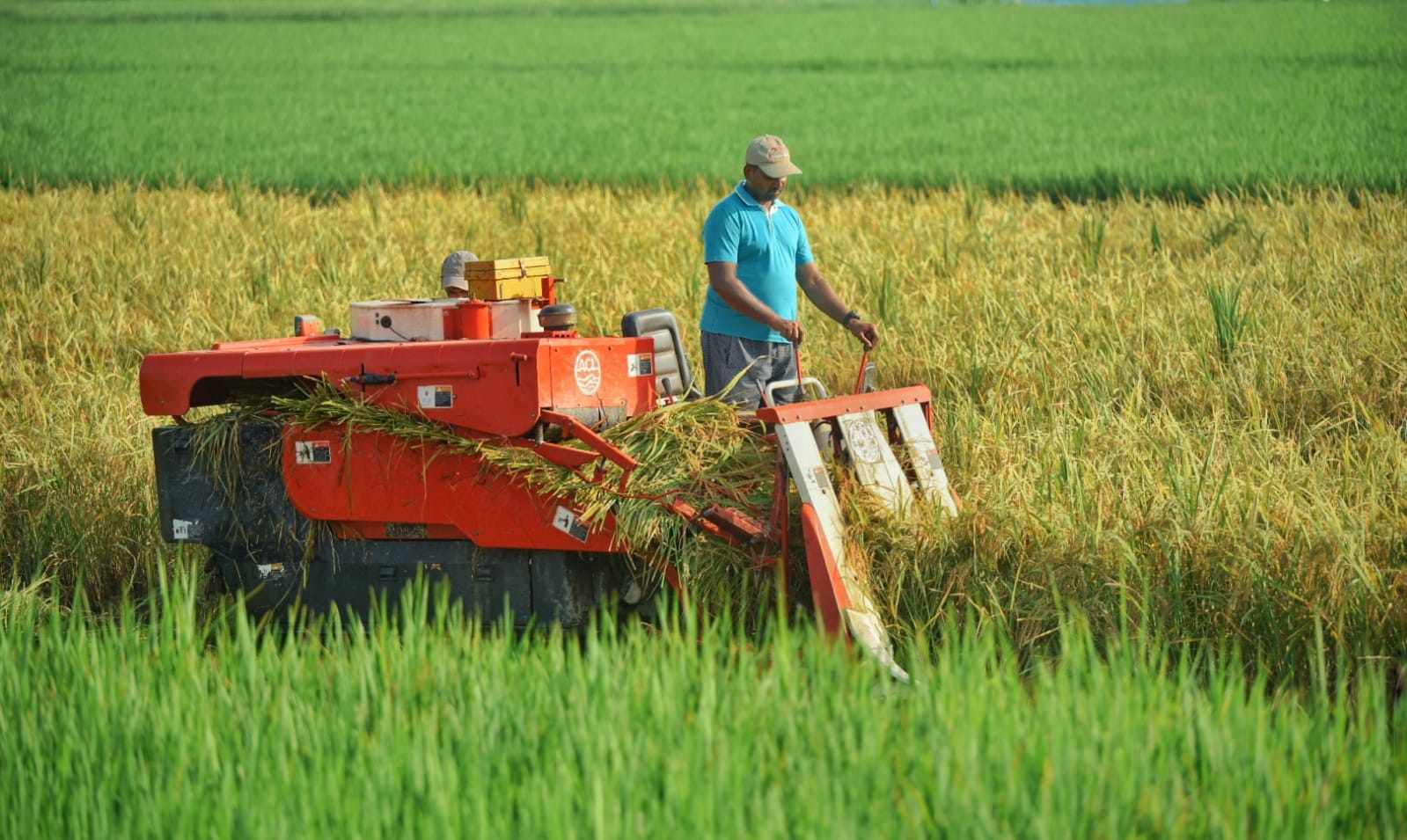Deepak Dhoj Khadka, Country Director of iDE Bangladesh
Porabari in Jashore, a village proud of its farming heritage, lies along the western border of Bangladesh, nestled in a quiet area intersected by a single rural farm road leading to a small market. It is a village of farmers, busy from dawn to dusk and serious about their business.
Mofizur Rahman wakes up early. At 5:30 am, it is already warm and humid, and he has a busy day ahead of him. After his morning prayers, Rahman heads straight to his shed where he has parked his prized possession – his ACI rice combine harvester, gleaming in the morning sunlight. Flashing a toothy smile, he checks his log for customer requests for the day. During peak rice harvesting time, Rahman usually takes his harvester out all day, coming home only in the evening to service and clean it before spending time with his family.
Bangladesh – an agrarian economy
Places like Porabari village, and people like Rahman, are part of a bigger story in Bangladesh, where agriculture and the rural non-farm economy contributes to more than 56 per cent of the country’s gross domestic product (GDP). The country has made tremendous progress in agricultural productivity over the last three decades, going from a food deficit nation to being almost self-sufficient.
This is largely attributed to improved agriculture and food policy by the Bangladesh government, resulting in better crop research, increased access to agricultural inputs, and improvements in farming technologies. Despite the progress, the country is challenged by a large population, where youth increasingly move out of rural areas, and economies are threatened by the increasing impact of climate change.
Back in Porabari, during one of Rahman’s breaks, he sits with a team member from an international NGO, iDE, and shares this story. “I never wanted to be a farmer like my father,” he says candidly. “I saw him work from morning to night, with very little to show for it at the end of the day. What is the benefit of all that hard work, if you can’t even send your kids to school?” he asks.

Bangladesh is a country that is nearly self-sufficient in agriculture. Photo credit: Unsplash
Youth seeking their fortunes abroad
Rahman’s question is a good one. The World Bank reports smallholder farming systems are often unprofitable because they suffer from a severe “yield gap” which is defined as the difference in the amount of crops produced versus the potential for production, largely pointing to a lack of access to – and utilization of – agriculture technology.
Like many of the young people in the village, Rahman dreams of making more income and has aspirations to move out of Porabari and seek his fortunes in a foreign country. The average age of smallholder farmers is increasing, with 49 per cent being between 30 and 49 years old, and 40 per cent being 50 years or older. Farmers are getting older because they aren’t being replaced by younger ones. The phenomenon is largely driven by a desire by young people to improve their lives, at the cost of leaving behind their homes in search of better opportunities in the city or abroad. The booming garment industry in Bangladesh has been a beneficiary of this trend and many youths continue to migrate to the Middle East or Southeast Asia every year, contributing close to US$22 billion, or 6.6 per cent of the GDP, as remittance as per World Bank estimates.
Seizing local opportunities through technology
Unfortunately, Rahman’s travel plans did not come together as he had hoped, and he was unable to secure funds for his overseas adventure. But in 2013, after taking over his family farm following the death of his parents, he attended a sales training event organized by iDE and local agricultural technology firm, RFL. At the event, he decided to purchase a simple power tiller operated seeder. The purchase led him to participate in a number of entrepreneur events that included machine operator training, maintenance training and, most importantly, training on how to run a machine operator service as a business.
“I like this job,” he says. “I’ve always liked my village and my farm, but the prospect of the back-breaking work, like my father did, has kept me from looking at this as my only means of a livelihood,” explains Rahman. He says he is excited that the machine has helped him earn more respect in the community. “They often come to me for business advice, as they think that I’m a good entrepreneur,” he says laughing.
With increasing agricultural labour shortages in rural communities in Bangladesh, Rahman and other machine service providers are seeing a sharp increase in demand for their services. More than half of the farmers in southern Bangladesh lack access to affordable farm machinery. Additionally, labour shortages and the high cost of labour and fuel constrain productivity and profitability.

During peak rice harvesting time, Rahman usually takes his harvester out all day. Photo credit: iDE Global
Creating pathways to prosperity
Yet this is not strictly about technology, nor about farming systems. It is about how entrepreneurs like Rahman are changing the business landscape in rural Bangladesh against the odds, creating pathways to prosperity. The Cereal Systems Initiative for South Asia – Mechanization Extension Activity (CSISA-MEA), funded by USAID, works to address this issue, helping unlock farmer productivity and increase household incomes.
iDE is collaborating with the International Maize and Wheat Improvement Centre (CIMMYT) to promote a transformative shift for small-scale farmers. By strengthening the supply chains of key manufacturers, dealers, and maintenance mechanics, affordable and appropriate technology becomes available to these farmers.



